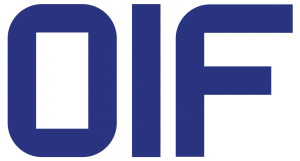OIF Tackles Incremental Bandwidth Increases with FlexEthernet
Significant Strides Made on SDN, APIs, CEI
As members of the Optical Internetworking Forum gathered last month for their first quarterly meeting of 2015, the organization launched a new project to enable flexible Ethernet by providing a toolkit to expand the utility of existing and future Ethernet interfaces. The new project, labeled FlexEthernet, provides a way for Ethernet equipment to more efficiently utilize optical link bandwidth. FlexEthernet toolkit provides channelization, bonding and sub-rate functionality to connect one or more Ethernet MACs using standard Ethernet PMDs between equipment, either directly or through transport links.
Building upon the OIF’s multi-link gearbox (MLG) work that addresses multilane configuration, FlexEthernet provides support for speeds in between and beyond the fixed speeds currently defined, driving a wider set of applications needed by data centers and carriers.
“Ethernet connections between routers or transport gear needs to be flexible by providing incremental increases in bandwidth,” said Nathan Tracy of TE Connectivity and the OIF’s Technical Committee chair. “The proposed FlexEthernet toolkit bridges the gap between previous, current and next-gen rates.
At the quarterly meeting, OIF members prepared to approve the OIF’s SDN Framework, a technical white paper identifying components and interfaces requiring standardization to provide a cohesive SDN app development framework designed around Web 2.0 technologies. Members also made progress on developing implementation agreements for SDN APIs addressing Topology, Service Request, Connection Request and Path Computation.
“The OIF is ahead of the industry in identifying specific work that needs to be done to bring SDN to fruition,” said Jonathan Sadler, Coriant and the OIF’s Technical Committee vice chair. “The API documents are the outcome of the prototype SDN demonstration that took place late last year. We have motivated, enthusiastic members working hard to finalize these APIs for service provider deployment.”
Members of the Physical and Link Layer Working group held a one-day interim meeting in addition to their usual three-day meeting discussing PAM4 and NRZ specifications as they continued work on the multiple CEI-56G projects. The CEI-56G development work will increase the data rates by a factor of two over the data rate of CEI-28G while also defining new application spaces. The group will hold another interim meeting before the Q2 meeting in April. For more information on the OIF’s CEI work see http://www.oiforum.com/technical-work/current-oif-work/
About the OIF
The OIF facilitates the development and deployment of interoperable networking solutions and services. Members collaborate to drive Implementation Agreements (IAs) and interoperability demonstrations to accelerate and maximize market adoption of advanced internetworking technologies. OIF work applies to optical and electrical interconnects, optical component and network processing technologies, and to network control and operations including software defined networks and network function virtualization. The OIF actively supports and extends the work of national and international standards bodies. Launched in 1998, the OIF is the only industry group uniting representatives from across the spectrum of networking, including many of the world’s leading service providers, system vendors, component manufacturers, software and testing vendors. Information on the OIF can be found at http://www.oiforum.com.

